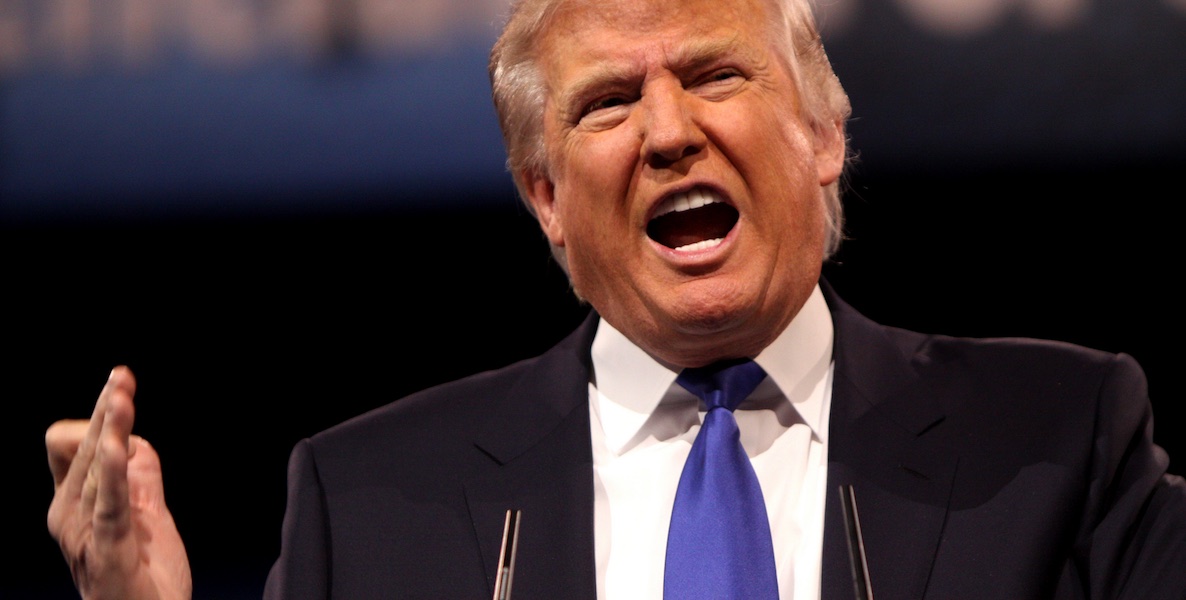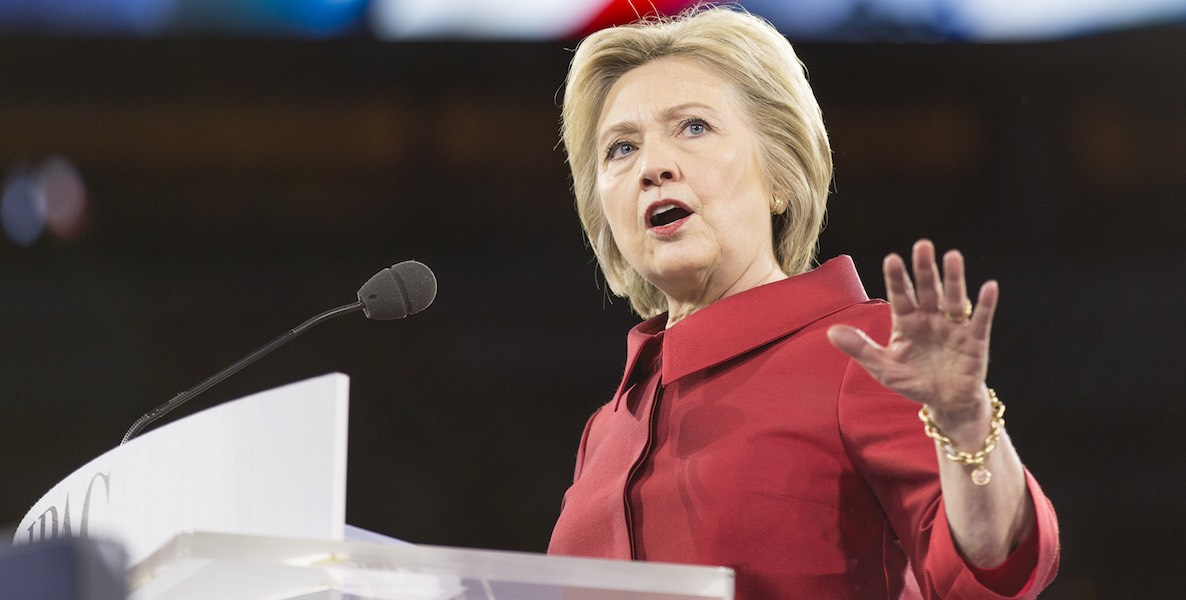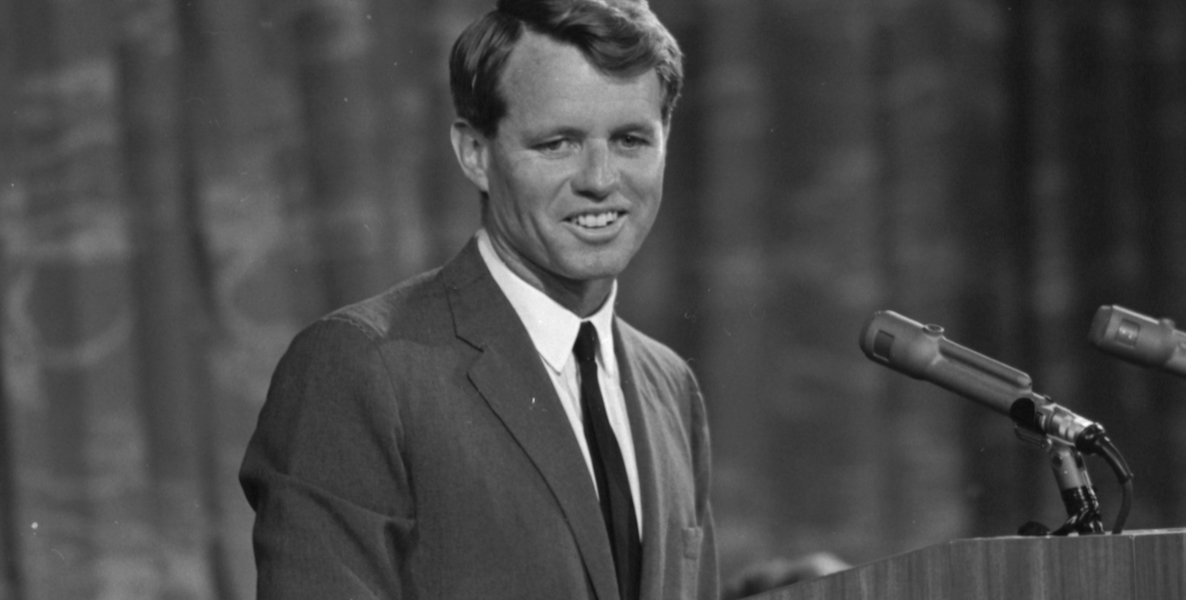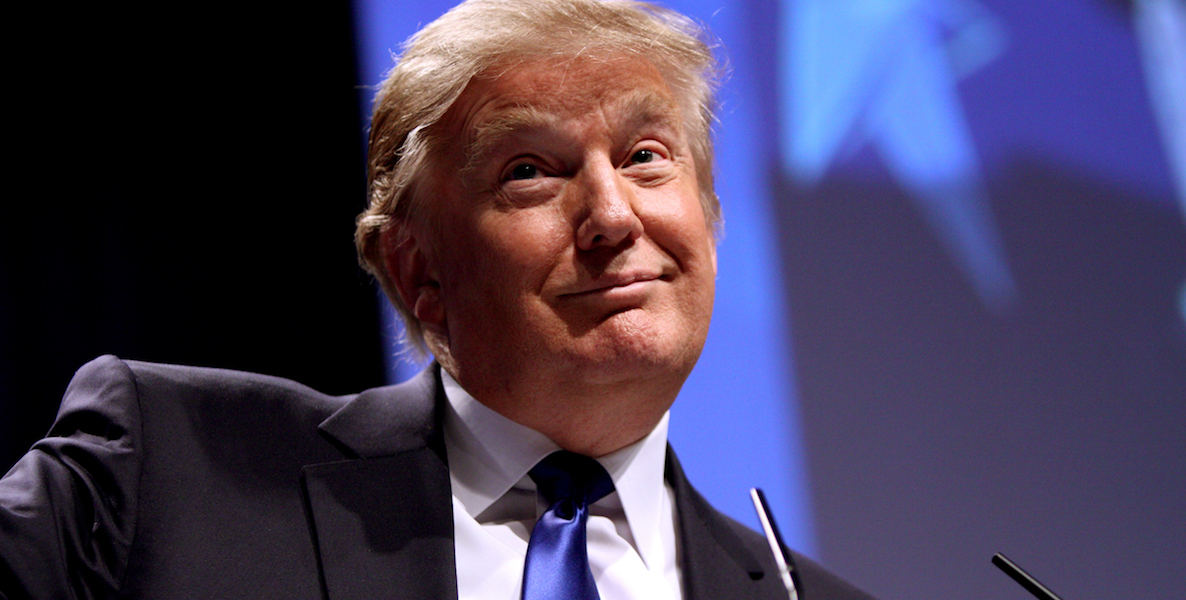Stories are the lifeblood of politics. Not just stories about candidates, but stories that sit at the intersection of candidates and the historical moment. To succeed on the national stage, your story has to connect with how voters view their own personal stories at this moment in time and how they view their future.
Indeed politics is, as Daniel Patrick Moynihan once said, an argument over the future. And the stories that emerged from our two national conventions posed remarkably contrasting visions for our future, built on dramatically different personal stories and dramatically different notions about the state of the nation.
Donald Trump in Cleveland
Trump’s Cleveland convention painted a national story of crisis: Illegal immigration, jihadist terrorism, a weakened military, elevated crime, police killings, closed factories, the absence of public competence, and a rigged system that favors global elites to the detriment of national interests.
The story was, as many commentators have noted, dark, even dystopian. Perhaps. But in a radically populist era, when there is so much suspicion of establishment politics, the story resonates with many Americans. This is especially true because the story is being told by an outsider to conventional politics.
At its core, the Trump story about America and his role within that story is a simple narrative that has been replayed for centuries. It has a familiar semantic cadence: lost greatness, social crisis, heroic recognition, and future redemption.
There is not much nuance to the story. There is not supposed to be. That is its appeal. It is easily understood and provides an emotional connection for those who feel the past was better than the present, and the future looks bleak. When people talk about its Rust Belt appeal, for example, they are referring to places where large numbers of mostly-white industrial workers have been displaced. And where changing national demographics (at least in their minds) are marginalizing them from the broader cultural narrative.
Will the Clinton story about America work in support of someone who is seen as the ultimate insider, someone who both Trump and (in a different way) Sanders railed against? Hard to say. In the age of Brexit, Hillary is still the stay vote.
The Trump story uses bright lines to separate past, present, and future. At one end of the story is nostalgia—with obvious nativist appeal—for an unspecified lost time. In the center is an awakening by a strong, if reluctant leader, who calls for a radical, but ill-defined change. At the outer edge is a vision of restored greatness. All such stories have deeply authoritarian possibilities in that they posit a savior figure whose will becomes the essential counterweight to the crisis.
The Trump story has three problems, which may define its political limits.
First, while there is indeed a great deal of economic and political turmoil in America and throughout the world, it is hard to square Trump’s crisis story with the facts on the ground: crime (despite a one year rise in many cities) has trended dramatically downward for several decades; unemployment is down to pre-recession levels with many employers having trouble filling skilled jobs; and no matter what you think of foreign policy during the past few decades, the American military is the dominant force in the world. There are simply no close seconds.
Secondly, many of the changes brought about by immigration, technology, global competition, and a culture that extends rights to people outside its traditional domain—women, LGBTQ community, people with disabilities—are not going to be reversed. There is ample evidence of a vigorous cosmopolitan culture in America: Rates of interracial marriages are skyrocketing, immigrant small businesses have become engines of growth, there is more, not less, tolerance of lifestyle differences, and the internet economy has changed the meaning of local versus global.
Thirdly, there is the problem of the salesman himself, Trump. He is a political savior whose life story shows a remarkable absence of public purpose. He has too many flaws to fit the classic hero-redeemer part. Not the flaws of a business failure here and there, like his bankruptcies or even an extramarital affair. Those are forgivable as part of a redemption odyssey. No, the problem is deeper. Too much of his biography is characterized by trying to put something over on people, from small contractors on building sites to, allegedly, students at Trump University. Too much of his sales pitch is bullying; there are too many enemies, too little impulse control, and no evidence of personal growth.
At the moment, Trump’s support has topped out in the low 40 percent range of the national electorate. He got a bounce from the period of Hillary Clinton’s FBI ordeal through the Cleveland convention. But can that trajectory continue in the face of the structural limits of his story and the DNC’s own convention bounce?
Hillary Clinton in Philadelphia
As the last of the Bernie Bros cleared from Dilworth Plaza outside Philadelphia’s City Hall, and as the city breathed a collective sigh of relief that there were no major problems during the DNC, the question was whether Clinton’s story could reverse Trump’s momentum and turn the tide back to the political insider.
Hillary Clinton’s Philadelphia convention wanted to accomplish six things:
- Integrate the Bernie Sanders opposition into the Clinton camp.
- Give a nod to the political center while simultaneously keeping the left happy.
- Define the need for change while staying loyal to President Obama’s legacy.
- Re-introduce herself to a nation wary of her trustworthiness.
- Define the Trump candidacy as beyond the pale of American democracy.
- Offer a different narrative of America at a time of change and uncertainty.
These tasks required smart rhetorical tactics and a nuanced choreography of symbols. Progressives including Bernie Sanders paid homage to Clinton’s left wing credentials. Others framed her story as a progressive pragmatist who gets things done. Every group that makes up the base of the party—ethnic minorities, union workers, LGBTQ activists, disability rights proponents—had ample presence throughout the convention.
Clinton’s husband, daughter, and friends sought to humanize her as wife, mother, grandmother, and colleague to counter the calculating and untrustworthy images many hold toward her. Former New York City mayor and businessman Mike Bloomberg had the job of explaining why centrists have to vote for Hillary, given the alternative. He and others plowed the convention field with speeches that tried to make the case that this is not a Right-versus-Left or Democrat-versus-Republican choice; this is a normal candidate versus an abnormal candidate who has strayed far from mainstream democratic (with a small D) values.
Trump’s story gives us a political savior whose life story shows a remarkable absence of public purpose. Too much of his biography is characterized by trying to put something over on people, from small contractors on building sites to, allegedly, students at Trump University. Too much of his sales pitch is bullying; there are too many enemies and too little impulse control.
President Obama pitched Hillary’s continuity with his policies while noting her opportunity to break the next barrier and continue his 2008 change theme. And throughout the convention, the shattering of the glass ceiling was a certain symbol of change.
Both the President and Michele Obama introduced the DNC counter-narrative about America. What was that counter-narrative? America has not lost its greatness and exceptionalism; the nation has experienced greater crises in the past; the present crises will be met and conquered; the expansion of liberty to marginalized groups expands the boundaries of democracy; and fear is not the way to manage change.
The counter-narrative was bathed in American patriotism. There were soldiers speaking, flags waving, and a number of speeches hearkening back to a couple of other conventions held in Philadelphia, like the one for independence in 1776 and the one to build our Constitution in 1787. By Thursday night, on the evening of Hillary Clinton’s speech, the Wells Fargo Center’s embrace of American symbols and identity was Republican-lite.
Why? Because the DNC wanted to not only claim the disruptive anti-establishment moment in America that has been defined by both Sanders and Trump, but fuse it with an American story where past, present, and future were not dramatically severed, as with Trump’s hero-redemption story. This American story could summon its own traditions to meet present day challenges. It was still on course.
Will the Clinton story also be held down by the national anxiety over her character, just as the Trump story has the burden of being pitched by a bad salesman? That is possible. Could a few more terrorist attacks across the globe bring Trump more support, because fear really is a significant motivator? Also possible. Or will Trump’s mean-spirited approach, as with his back and forth with the Khan family, finally become too disqualifying even for someone who has instilled such loyalty with his base? And will the Clinton story about America work in support of someone who is seen as the ultimate insider, someone who both Trump and (in a different way) Sanders railed against? Hard to say. In the age of Brexit, Hillary is still the stay vote. She is the establishment.
How will the election play out from here?
We have two different stories about America to chose from in this election. One driven by someone without any government experience, another driven by someone without much non-government experience. The facts and policies that make up or contradict those stories may never receive vetting in an election so mired in personal attack, with two candidates whose favorability ratings are so low.
And that is too bad. Because underneath those two stories there are lots of issues that deserve real debate, something virtually impossible in this election. The debates will be closer to World Wrestling Entertainment shows than studied exchanges. Trump will have no choice because he has shown little willingness to deeply understand policies, focusing instead on his hero drama and national fear.
Yet the very issues that are being brought up in an almost cartoonish manner require answers and conversation. What is American foreign policy today given the state of the Middle East and the crises in Europe, from Brexit to Putin? What domestic policies should be pursued to deal with dislocation in a global economy and expanded levels of income inequality?
The trans-pacific partnership (TPP) trade deal represents nations that account for about 40 percent of global GDP and yet has been reduced to election sound bites in both parties. Have either of the two candidates read the details of the proposed deal?
In those areas where there is actually some agreement—infrastructure investment and maintaining the health of Social Security and Medicare—how do their approaches differ? Could we actually debate the future of manufacturing (which is showing some re-shoring rebound in the US) in a fact driven way? What are we best positioned to achieve as an economy and how does our education system support or hamper that progress?
In the age of anti-establishment politics, will a significant enough number of people care about Trump’s character flaws if they are in “change at any price” mode? How does the Hillary Clinton campaign become a change campaign while also projecting her as the steady hand in contrast to Trump’s reliance on policy non sequiturs?
A lot remains to be seen. But what’s clear is that, in an electoral rumble, we will not get much chance to discuss those issues substantively. We deserve better.
Photo header:Flickr/Laurie Shaull







